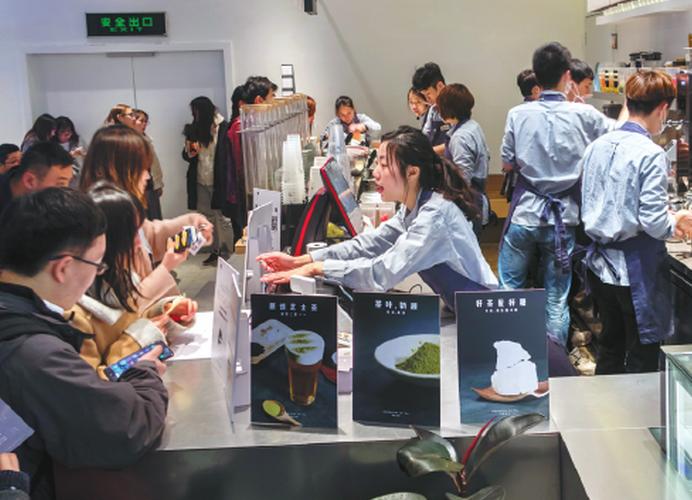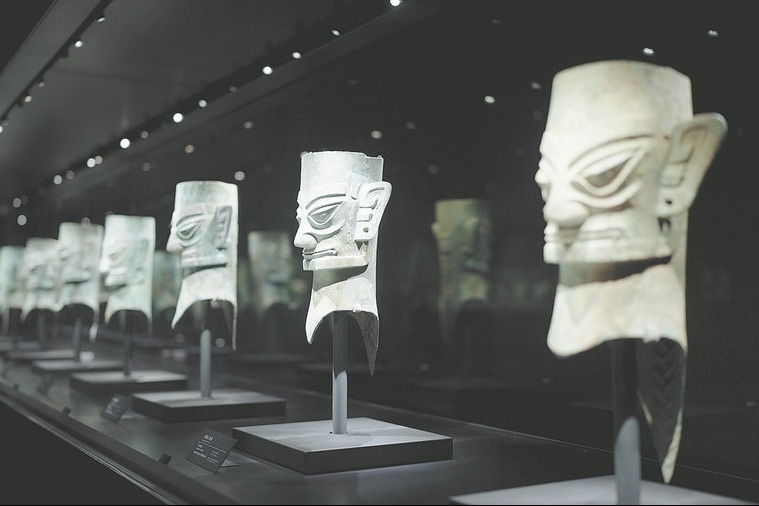Fusion tea wins hearts of young people
By Ren Xiaojin and Jing Shuiyu | China Daily | Updated: 2018-05-17 09:49

Traditional beverage business caters to younger generation's demand for sense of identity, new lifestyle
Many Chinese people take it for granted that China, with a tea drinking culture that goes back thousands of years, is home to the top tea lovers in the world. But actually that's not the case.
Despite being the largest tea consumer in the world, China is far from being the top tea-loving country. In fact, it is not even among the top 20, based on the amount of tea consumed per capita every year, according to a report by The Telegraph in 2017.
Indeed, coffee shops and individual or chain artisan cafes nowadays are much easier to spot than tea houses in first-tier cities such as Shanghai and Beijing. The image of drinking tea from a ceramic cup on a tree-root-carved tea table has even come to be considered an old-fashioned presentation of the time-honored Chinese tea culture.
But none of this means young people in China have stopped drinking tea. On the contrary, tea-drinking has become a hot business since last year, attracting passionate investors such as IDG China, but not in the traditional way.
Unlike the elderly who enjoy going through eight steps to brew a cup of tea, Chinese young people are turning the business into an order-to-go fashion. Tea flavors no longer focus on the original taste of the tea leaves, but are mixed with wider possibilities - fruit tea, bubble milk tea, half coffee half tea, cold tea brewed with coconut water, tea topped with foamed cream cheese and blended with triple chocolate ice cream. You name it, China has it.
According to Euromonitor, an international consultancy, 70.3 million liters of hot tea and 15.2 million liters of cold tea were sold in China in 2016, making China the largest tea market in the world. And it has the potential to grow even bigger.
With young people adapting to new habits of tea consumption, the market is growing at a steady pace. According to Kantar Worldpanel, city residents in China aged 15 to 45 buy 14.3 cups of freshly brewed tea drinks a year with an average price of 15.2 yuan ($2.40), making it a market worth 97.8 billion yuan.
"Traditional tea cannot satisfy the demand of young Chinese consumers born after the 1980s anymore," said Xu Rongcong, an analyst of China Merchants Securities. "It is the age for creative fusion tea drinks such as cheese tea."
According to CMS, in the first three quarters of 2017, the sale of freshly brewed tea drinks in top-tier cities grew 19 percent year-on-year.
One of the phenomenal tea shops Xu investigated is Hey Tea, a Guangdong-based company specializing in tea with salty cheese toppings.
A few months after it was launched in Beijing's buzzing hipster Sanlitun area last year, the shop became one of the hottest places in town, with internet celebrities queuing for hours to get a cup and livestreaming themselves drinking it. It's so popular that tea-scalping is a real thing now - one can buy a drink at triple the normal price to skip the queue.
Hey Tea cooperated with local fashion designers during the Spring Summer Shanghai Fashion Week last year, inviting five Chinese designers to create several different cup covers.
It gained 100 million yuan in investment in 2016 and recently announced plans to secure a further 400 million yuan from IDG China.
Hey Tea has opened more than 80 stores around China, mostly in the business areas of first-tier and second-tier cities. After its second round of financing, the tea shop plans to open 100 more shops.
Consumers buying new types of tea not only want to quench their thirst, but also are attracted by the social and leisure value behind the beverage, said Zhou Yu, chief analyst of the retail sector at CITIC Securities, in a research note.
The new Chinese tea "coincides with the young consumer group's pursuit of new lifestyles and sense of identity. It's also a fashion label", Zhou said.
InWe Cha and Tea of Naixue, two other domestic tea shops, also secured 500 million yuan and 100 million yuan investments respectively from Liu Qiangdong, chairman of JD Group and Tiantu Capital.
In addition to consuming a broader array of flavors and ingredients than their elders, today's younger tea consumers prefer an order-to-go style, rather than spending hours in a teahouse. And that's good for business, too.
"Compared to an eat-in model, the current tea business doesn't require a quality space, and it has become consumers' first choice when they go shopping or traveling," Rong said. "One Hey Tea shop can sell over 2,000 cups a day, with monthly revenue topping 1 million yuan."
The trend of fusion tea has also lured foreign entrepreneurs, who are bringing Western detox tea philosophy to increasingly open-minded Chinese consumers.
Martin Papp, a devoted tea lover from the United States, opened his first tea shop in Sanlitun years ago in which he sells Kombucha, the bottled detox tea.
"Kombucha is a popular concept in Western countries where people use the tea as a functional drink to rejuvenate your gut bacteria," Papp said.
"When you investigate ancient Chinese food philosophy, applying gut bacteria in food and drink has long been part of the culinary culture," he said. "The idea of Kombucha is not exactly foreign to the consumers."
As a former resident of Jiangxi province, a major location for tea harvesting, Papp found that China offers a wide variety of tea leaves, many of them of the highest quality. But young Chinese people are no longer fans of the teahouse.
"It is a pity to see people stop loving those fabulous teas and I want to change and create an international, modern and cool tea drink for consumers," he said.
Apart from not being cool, Papp said the lack of education about tea is another reason young people stop loving the beverage.
After years of research on tea leaves, he decided to make the information clear and easy to understand by labeling the materials and functions of Kombucha and recreating the old-school teahouse fashion in a coffee shop style.
Papp also supplies his tea in trendy restaurants and cafés, promoting a lighter diet and a healthier lifestyle.
























